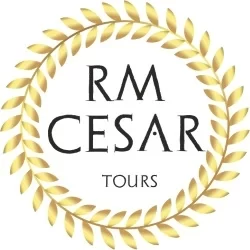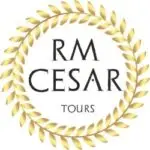Lisbon The City of Light
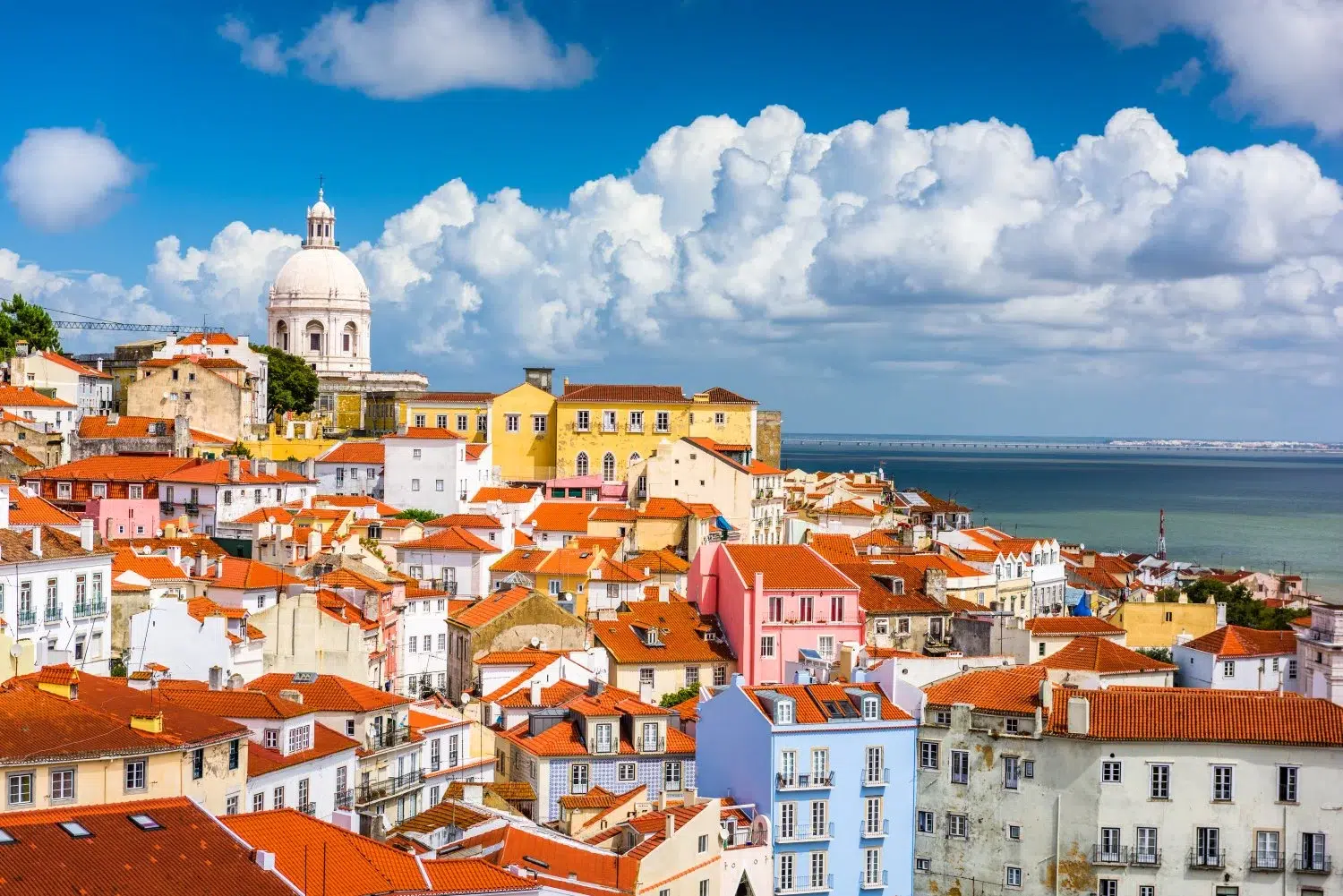
Discovering the Soul of Lisbon the City of Light
Nestled along the scenic coastline of Portugal, Lisbon is a hidden gem waiting to be discovered.
With its rich history, vibrant culture, and stunning architecture, this city has a soul that captivates all who visit.
Join us on a journey as we uncover the secrets of Lisbon and delve into the heart of the City of Light.
Nestled along the scenic coastline of Portugal, Lisbon is a hidden gem waiting to be discovered.
With its rich history, vibrant culture, and stunning architecture, this city has a soul that captivates all who visit.
Join us on a journey as we uncover the secrets of Lisbon and delve into the heart of the City of Light.
The City of Lisbon
Lisbon is the capital and the largest city of Portugal. With over 20 centuries of History, this city located on the 7 hills has more than 500,000 inhabitants.
Lisbon shows multiple contrasts between the historical and modern, combining different cultures, trends and lifestyles. Situated near the Tagus river and sunny almost all the time, the Portuguese capital has a unique beauty and an internationally acclaimed architectural singularity.
Rich in monuments, neighborhoods (Baixa Pombalina, Belém, Bairro Alto, Chiado, Bica, Alfama and Mouraria), riverside zone, Fado houses, parks, gardens and viewpoints, Lisbon offers various possibilities to discover, so visit and enjoy the vast natural, historic and cultural city heritage.
Portuguese sidewalk or Portuguese mosaic or mosaic sidewalk is the established name for a certain type of floor covering used especially in the paving of sidewalks, public spaces, and private spaces, in general. Called “Calçada”
Landmarks such as the Medieval Cathedral, Belem Tower, Jeronimos Monastery, National Pantheon, Palace Square and the Downtown are some of the tourist attractions of Lisbon that fascinate thousands of visitors from around the world.
The gastronomy of Lisbon is very influenced by its proximity to the sea. So typical specialties in Lisbon are fried cod, fried green beans, and seafood. The famous Bife à Café is also considered a capital’s “ex-libris” food. The most famous dessert in Lisbon is the traditional Pastel de Nata (custard tart), made in a former factory in Belém, better known as Pastel de Belém.
Visiting Lisbon is living different experiences. Lisbon is a city that charms its visitors.
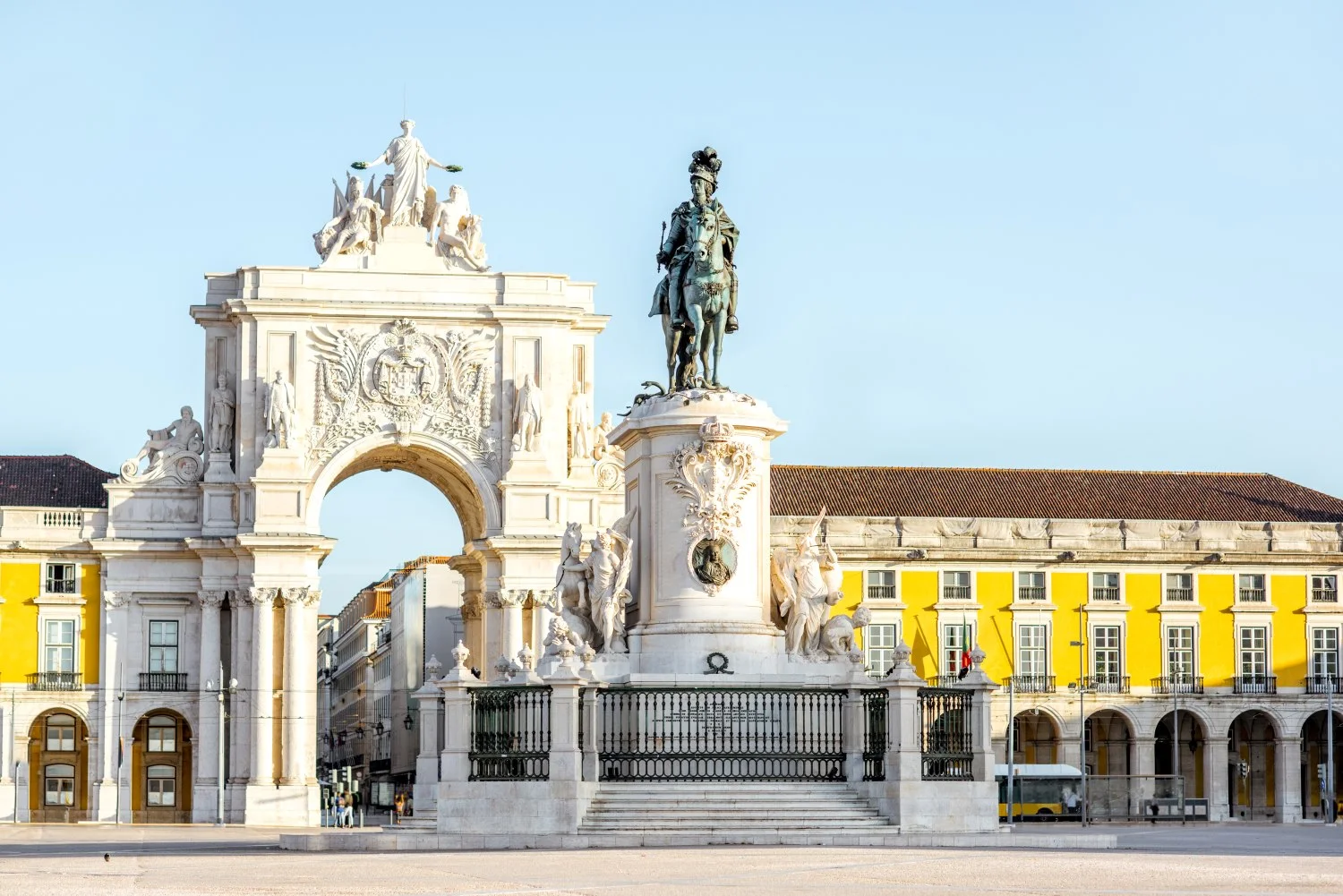
The History of Lisbon
Lisbon yesterday and today.
Lisbon is the capital and the largest city of Portugal. With over 30 centuries of History, this city located on seven hills has more than 500,000 inhabitants.
It is mainland Europe’s westernmost capital city and the only one along the Atlantic coast.
Lisbon is one of the oldest cities in the world.
Its name may have been derived from a popular legend that the city of Lisbon was founded by the mythical hero Ulysses.
Whether true or not, it is known that the Phoenicians established a port town called Alis Ubbo (meaning safe harbour) more than three thousand years ago.
The city was later inhabited by the Greeks, the Carthaginians and the Romans, who took over in 200 BC and stayed for the next six centuries.
The Moors arrived from North Africa in the 8th century AD and conquered the city.
Under the Moors the city was known as al-Usbuma. An important era in the history of Lisbon started then and lasted for some 400 years.
The Moors allowed a multicultural society to exist in Lisbon. The first king of Portugal, Afonso Henriques, conquered Lisbon in the year of 1147 with the help of the Crusaders after a siege lasting several months.
The city’s modern history gained a new impetus in 1256, when King Afonso III relocated his capital from Coimbra to Lisbon and the city became the base for Portugal’s maritime expansion.
From the fifteenth century onwards, the port of Lisbon became one of the most important in the world.
During this period, the “Casa da Guiné e Mina”, a set of warehouses and customs offices, was established in the capital.
This organization managed all aspects of overseas trade giving the city great power.
The Modern Age has been Lisbon’s golden era, as the capital boomed thanks to the Portuguese Age of Discovery.
Once the famous Portuguese explorer Vasco da Gama discovered the sea route to India, the wealth began flowing into Lisbon.
The city traded with Africa, Europe and the Far East. Merchants arrived from all over the world and the city became one of the most cosmopolitan spots on the planet.
Many of the city’s great architectural works were built in the 16th century.
Under the rule of King Manuel I, Portugal developed the so called Manueline architecture that celebrated Portuguese navigations and discoveries.
In the first half of the 18th century, the profits from the plantations and the gold and diamond mines of Brazil brought a new era of wealth, development and excitement to Lisbon.
This period of optimism and growth ended in the morning of Nov. 1, 1755, when Lisbon was devastated by one of the strongest earthquakes ever recorded (recent studies estimated the earthquake approached magnitude nine on the Richter scale).
The earthquake was followed by a tsunami and fires, which caused the near-total destruction of the city. About 60,000 lives were lost, and more than 12,000 buildings were destroyed.
The city was rebuilt according to the plans of Prime Minister Sebastião José de Carvalho e Melo, the 1st Marquess of Pombal.
Pombal demolished the earthquake ruins and rebuilt downtown according to modern urban design rules.
Lisbon recovered at an astonishing rate for the time, but the city would never return to the glory that it had enjoyed before the earthquake.
Nevertheless, Lisbon continued to expand during the 19th century and the population doubled during that period to reach 300 thousand people.
In 1986, Portugal became a member of the European Union and twelve years later, in 1998, Lisbon hosted the World Expo, which changed the city’s urban landscape.
Lisbon shows multiple contrasts between the historical and modern, combining different cultures, trends and lifestyles. Rich in monuments, neighborhoods (Baixa Pombalina, Belém, Bairro Alto, Chiado, Bica, Alfama and Mouraria), riverside zone, Fado houses, parks, gardens and viewpoints, Lisbon offers various possibilities to discover, so feel free visit and enjoy the vast natural, historic and cultural city heritage.
Monuments, the heritage of Lisbon and the world
Monument of Discoveries
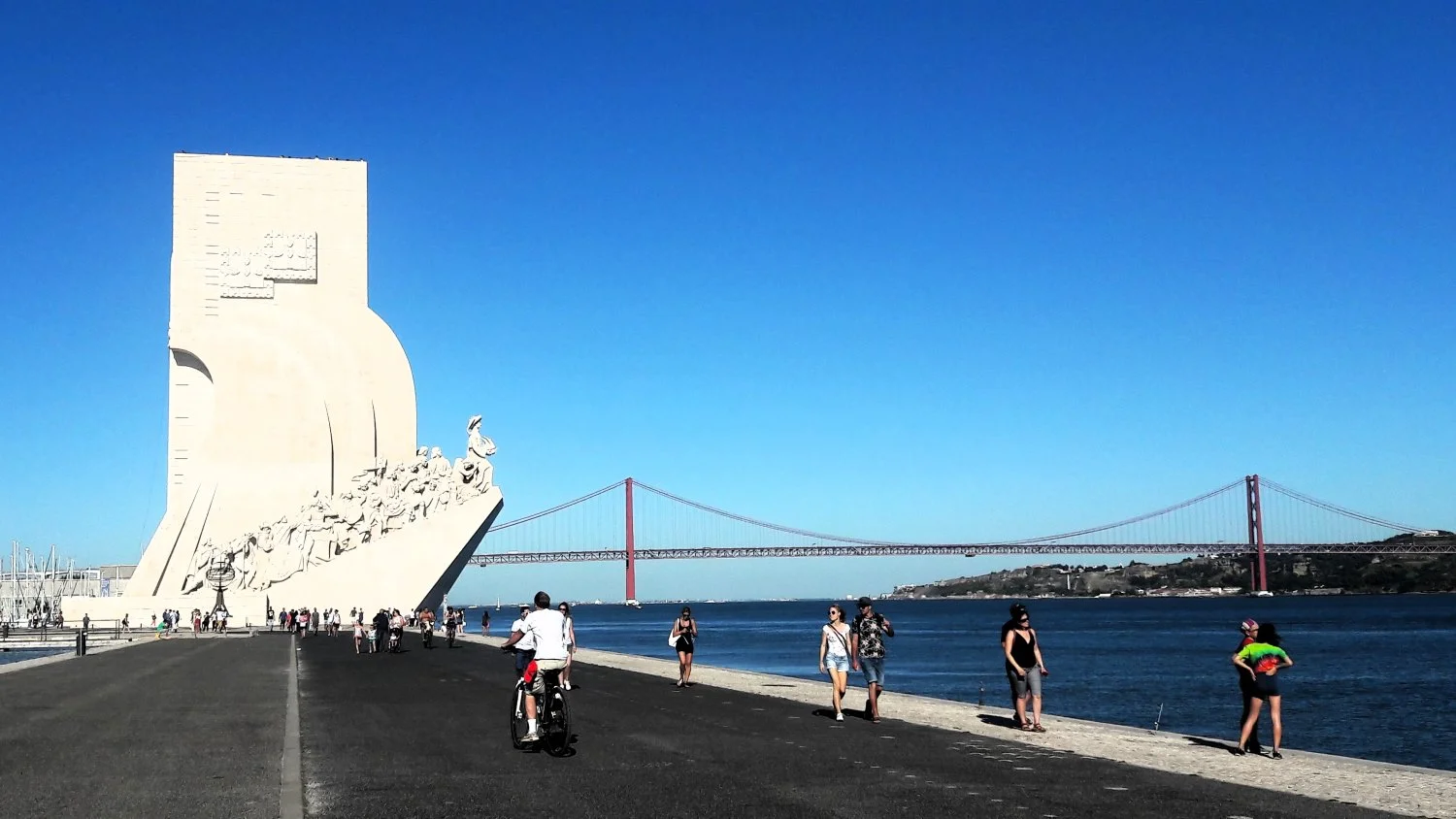
MONUMENT OF DISCOVERIES Created by Cottinelli Telmo (1897–1948) and the sculptor Leopoldo de Almeida (1898–1975), Padrão dos Descobrimentos was first erected in 1940, in a temporary form, as part of the Portuguese World Exhibition, built with perishable materials. It had a light iron and cement frame, while the moulded sculpture had a light iron and cement frame, while the moulded sculpture was made of gypsum (formed of plaster and burlap, and reinforced by a wooden and iron structure).
The monument was reconstructed in 1960 to mark 500 years since the death of the Infante Dom Henrique (Henry the Navigator). This time it was made of concrete and rose-tinted Leiria stone masonry, with the sculptures made of Sintra limestone masonry.
The Centro Cultural das Descobertas was opened in 1985. Architect Fernando Ramalho remodelled the interior, giving the monument a viewpoint, auditorium and exhibition hall.
A stylised caravel seems to be setting out to sea, with Henry the Navigator in its prow. On the two lateral ramps ascending to the symbolic figure of the Prince are some of the significant characters of the Portuguese overseas expansion and cultural names from the age of the Discoveries, 32 in total, all portrayed with symbols that allude to their identity: navigators, cartographers, warriors, colonisers, missionaries, chroniclers and artists.
Composed of a vertical element consisting of a stylised mast oriented North-South, with two Portuguese coats of arms on each side with its five small shields, surrounded by a band with 12 castles and stylised fleurs-de-lis in the centre.
On each side are three triangular structures, each with one curved side, giving the illusion of sails blown out by the wind.
The north side is formed by two giant stones which bear inscriptions in metallic letters. On the left side, the inscription above an anchor reads ‘TO THE INFANTE DOM HENRIQUE AND THE PORTUGUESE WHO DISCOVERED THE SEA ROUTES’. On the other side, the inscription above a laurel wreath reads, ‘ON THE V CENTENARY OF THE INFANTE DOM HENRIQUE 1460–1960′.
In the middle of the monument, a flight of nine steps gives access to a platform with a view over the entire surrounding area.
The second flight of five stairs and a portal with a round arch formed by vaulted stones lead through to the interior of the monument.
The monument is flanked by two metal armillary spheres on two parallelepiped platforms.
Dimensions and features:
Height – 56m; Width – 20m; Length – 46m; Foundations – 20m
Central figure (Infante) – 9m; Figures on the sides (32) – 7m
Belém Tower
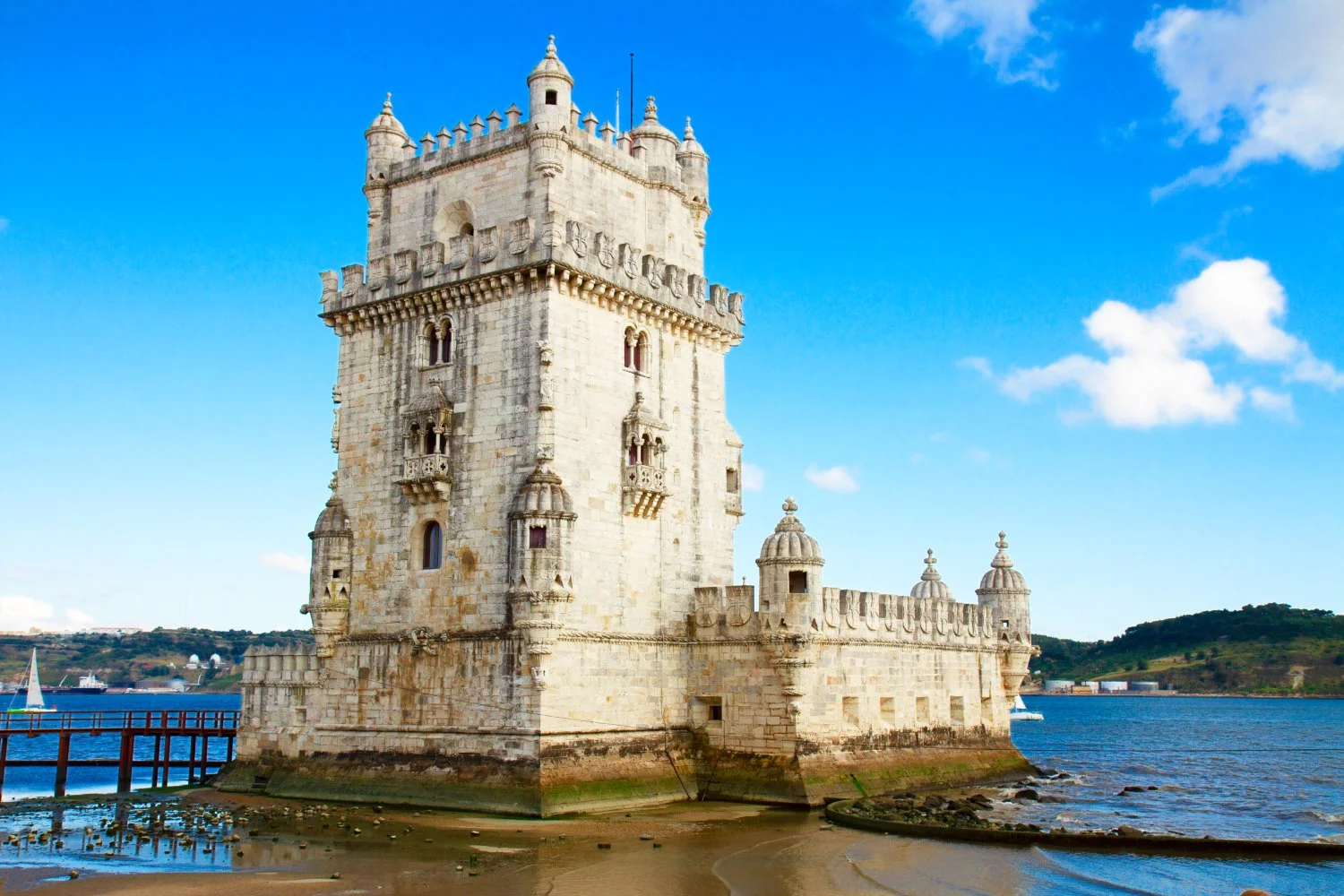
UNESCO World Heritage, a cornerstone of Portuguese identity and an icon of a country historically moulded by its proximity to the ocean and its maritime discoveries of new worlds.
The Belém Tower, a UNESCO World Heritage Site, is one of Lisbon’s most striking monuments and the icon of a country historically moulded by its proximity to the ocean and its maritime discoveries of new worlds.
Discoveries by Portuguese navigators transformed Lisbon into the world’s main trade hub in the 15th and 16th centuries.
To protect the city, King João II conceived a pioneer project to defend Lisbon from enemy ships, a work completed in 1514 and which included the building of the Belém Tower, designed by architect Francisco de Arruda.
The tower’s unique design includes a modern and heavily armed bastion, protruding over the river.
King Manuel I clearly wished the Belém Tower to stand as a lasting symbol of his powerful reign by depicting the royal coat of arms, the armillary sphere and the cross of the Order of Christ.
Jerónimos Monastery
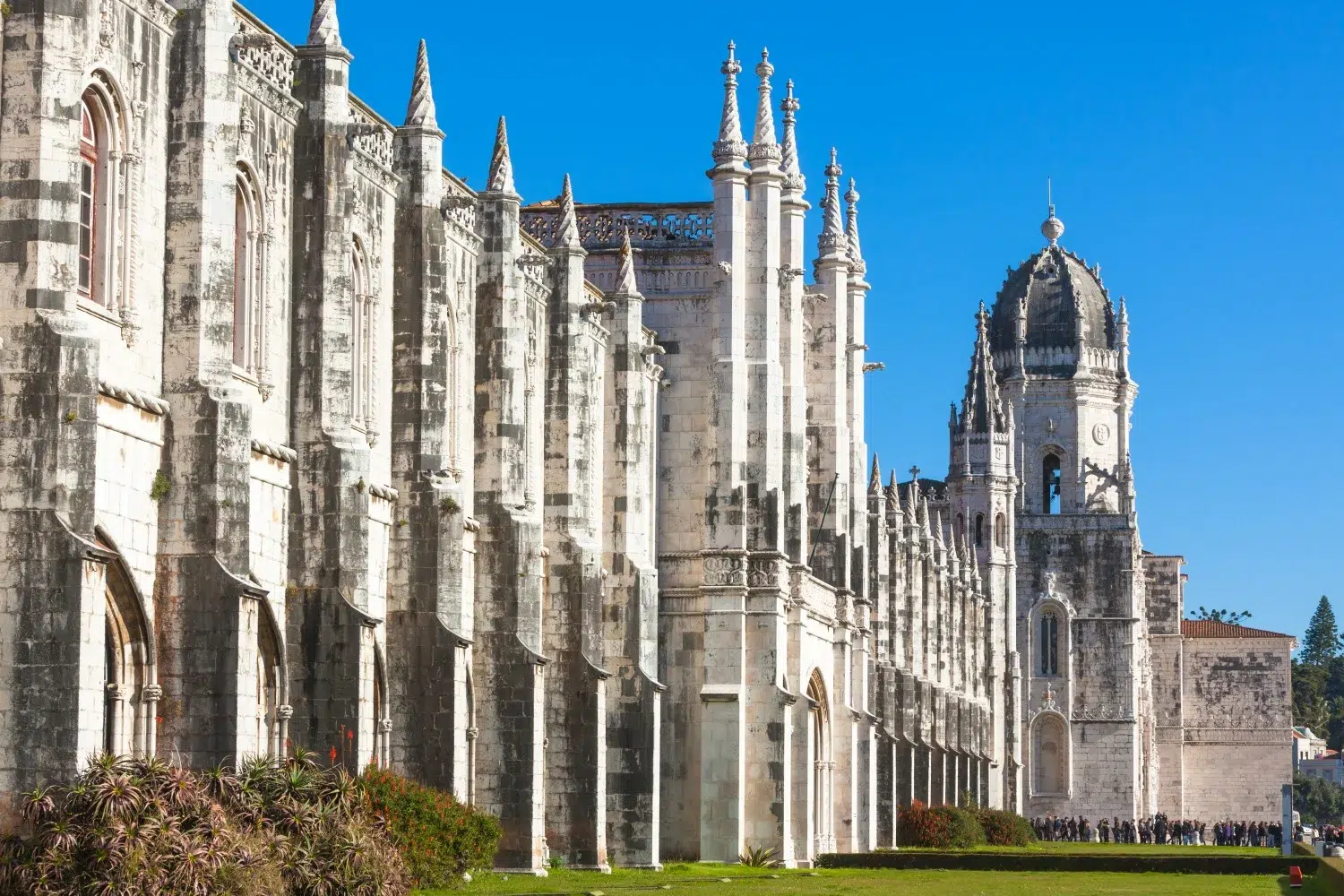
The Jeronimos Monastery is the most impressive symbol of Portugal’s power and wealth during the Age of Discovery. King Manuel I built it in 1502 on the site of a hermitage founded by Prince Henry the Navigator, where Vasco da Gama and his crew spent their last night in Portugal in prayer before leaving for India. It was built to commemorate Vasco Da Gama’s voyage and to give thanks to the Virgin Mary for its success.
Vasco da Gama’s tomb was placed inside by the entrance, as was the tomb of poet Luis de Camões, author of the epic The Lusiads in which he glorifies the triumphs of Da Gama and his compatriots. Other great figures in Portuguese history are also entombed here, like King Manuel and King Sebastião, and poets Fernando Pessoa and Alexandre Herculano.
The monastery was populated by monks of the Order of Saint Jerome (Hieronymites), whose spiritual job was to give guidance to sailors and pray for the king’s soul. It’s one of the great triumphs of European Gothic (UNESCO has classified it a World Heritage monument), with much of the design characterized by elaborate sculptural details and maritime motifs. This style of architecture became known as “Manueline,” a style that served to glorify the great “discoveries” of the age.
The cloisters are magnificent, with each column differently carved with coils of rope, sea monsters, coral, and other sea motifs, evocative of that time of world exploration at sea. Here is also the entrance to the former refectory that has beautiful reticulated vaulting and tile decoration on the walls, depicting the Biblical story of Joseph.
The church interior is spacious with octagonal piers richly decorated with reliefs, and outside is a garden laid out in 1940 consisting of hedges cut in the shape of various municipal coats of arms of Portugal. In the center is a large fountain also decorated with coats of arms, often illuminated on special occasions.
The garden leads to a small park faced by a row of pretty 16th-century houses that are home to a number of traditional restaurants with outdoor seating. There you can see a curious Thai pavillion, which was built in Bangkok and shipped to Portugal in 2011 to commemorate the 500th anniversary of the Portuguese arrival in Thailand, which led to the first alliance between that country and a European nation.
The Historic Neighbourhoods in Lisbon
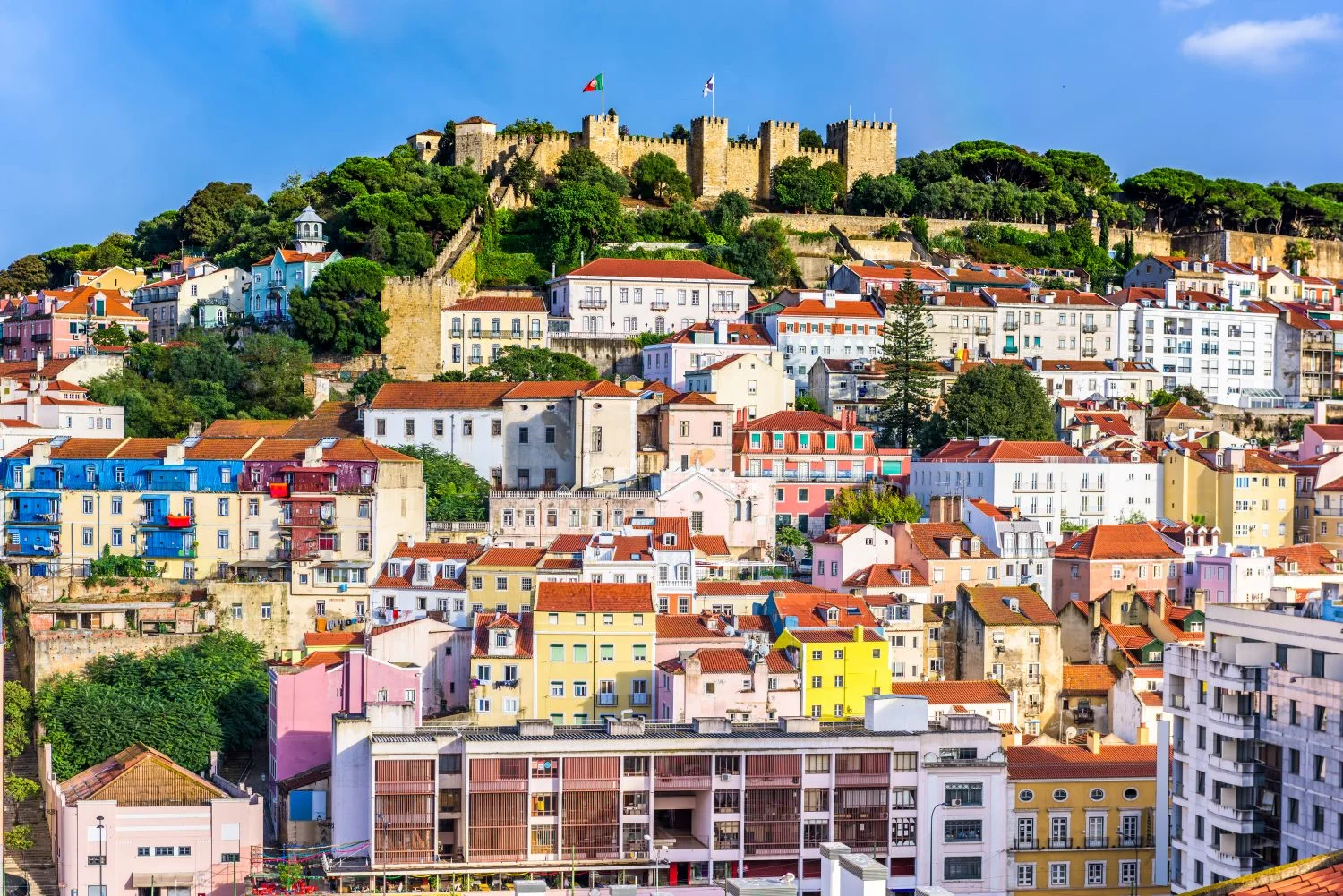
The most traditional neighbourhoods are Baixa, Chaido, Bairro Alto, Alfama and Belém. Each one of these districts has its own unique vitality and essence.
In addition to these traditional areas, there are two very modern areas of Lisbon. The first is called Marquess of Pombal Square (Praça do Marquês de Pombal) and its surroundings. The second is the area around the Park of the Nations (Parque das Nações), which was constructed for the 1998 Lisbon World Exposition.
Alfama, Europe’s oldest neighborhood, is a historic gem featuring cobbled lanes, narrow alleys, medieval churches, and breathtaking viewpoints along its hilly streets. What’s more, it’s the birthplace of fado, the iconic musical style that embodies the essence of Lisbon and Portugal, brimming with saudade, a wistful longing for the homeland. But there’s even more than fabulous fado to attract you to Alfama, as this Lisbon neighborhood also is home to a wide array of popular Lisbon attractions, including the São Jorge Castle, the Sé Cathedral, the Santo Estevão church, the Mosteiro de São Vicente de Fora, the Santa Luzia viewpoint and many more.
Lisbon The Capital of Gastronomy

Lisbon’s food and gastronomy scene is a delightful mix of traditional Portuguese flavors and innovative culinary creations.
From the iconic pastel de nata to the hearty bacalhau dishes, Lisbon offers a rich tapestry of tastes that reflect the country’s history and culture.
The city’s bustling markets and cozy eateries invite visitors to savor fresh seafood, aromatic spices, and sweet treats, making every meal a memorable experience.
Whether indulging in petiscos (Portuguese tapas) or enjoying a leisurely dinner overlooking the Tagus River, Lisbon’s gastronomy never fails to captivate and delight.
Pastel de Nata is a must try when in Lisboa. This custard tart filled with a secret recipe cream will make you beg for more.
They’re so good, you won’t have just one Pastel de Nata. Who visits Lisboa can’t afford to miss the Pastel de Nata sprinkled with cinnamon.
Being a coastal country, the Fish and the Seafood are amazing. The Bacalhau (salted codfish). Speacilly during the Lisbon Festivities.
The grilled fish, Sole, Seabass and much more fish are everywhere as well are the Bifanas (sliced pork on bread).
To drink nothing like the vast choice of Portuguese wines and the fruity sangria.
Try the traditional Green Wine And these are only some of the many excuses the city gives you to leave the diet behind.
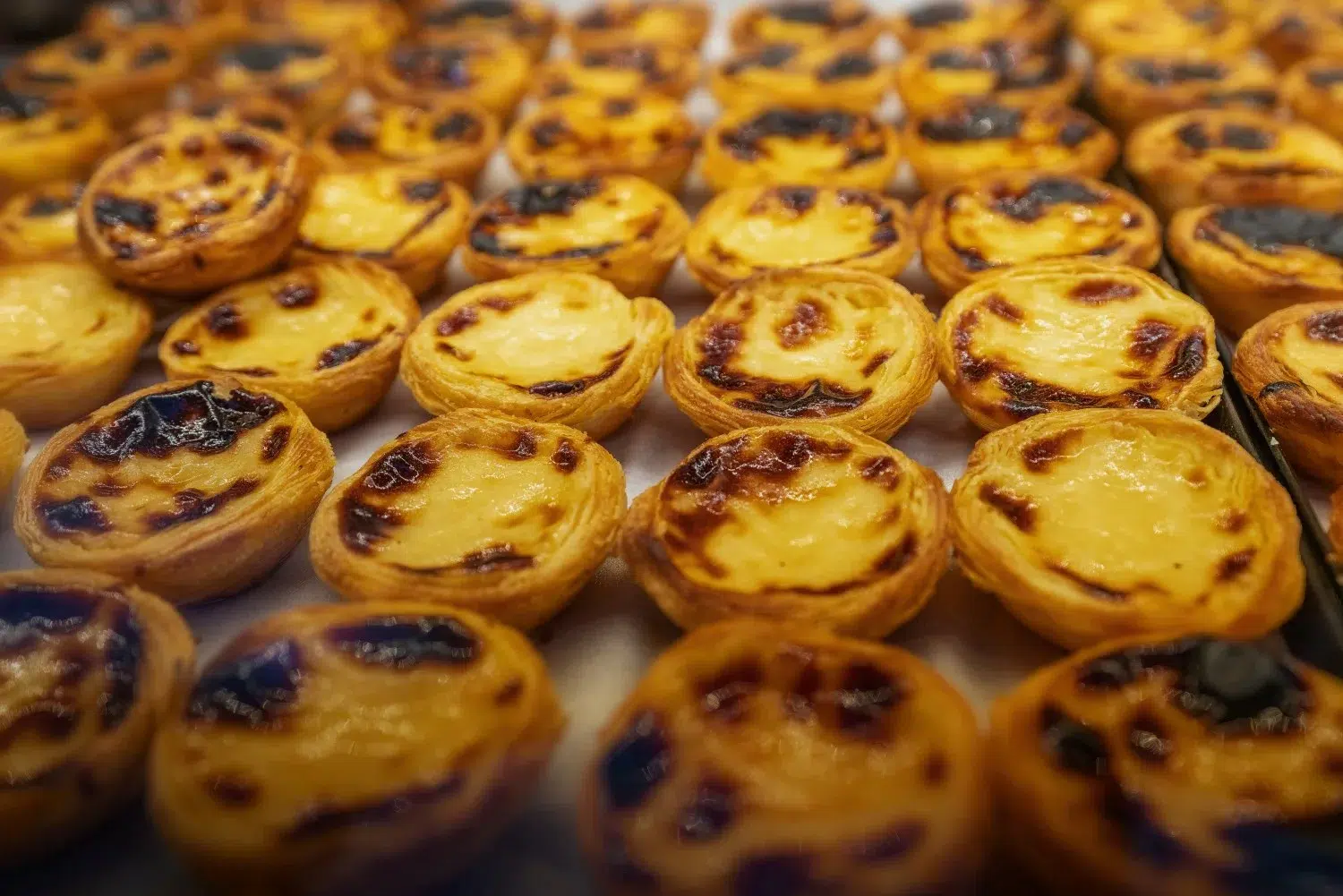
There are hundreds of typical dishes from the north to the south of Portugal and the islands.
Unique and varied pastry. Hundreds of different cheeses, buttery, cured and fresh. Iberian ham. Chorizos and various sausages.
A gastronomy with a great oceanic influence and rich in fish and sea food. Top quality meats and wines. Fruity and dry.
The great production of olive oil and wine that distinguishes Portugal. Not forgetting the great quality of Portuguese coffee
One of the secrets of Portuguese cuisine is largely the quality of the olive oil. The presence of garlic and onion are part of most or the basis for many dishes.
The demands and quality of products are enormous. Because the Portuguese are one of the most demanding civilizations when it comes to food.

No trip to Portugal is complete without trying Pastéis de Nata, a traditional Portuguese custard tart from Lisbon. These flaky, creamy pastries are a popular breakfast or snack option and can be found in bakeries and cafes all over the country. Be sure to try them warm and sprinkled with cinnamon for the ultimate experience.
What is the best way to discover the best of Lisbon?
The best way to discover and genuinely get to know Lisbon. Being Lisbon, a city of 7 hills. It is not an easy city to walk due to its steep climbs. We suggest you save your energy and gain knowledge about its history.
Nothing better than discovering Lisbon, on a private tour with a very knowledgeable, experienced local guide from the city. You will travel in Lisbon, in a luxury vehicle with air conditioning. You won’t have to walk far and you’ll save your energy to visit each moment and place. You will save time with someone who deeply knows every corner of the city.
Here we have the tour we suggest for you. With the best of Lisbon exclusively for you.
